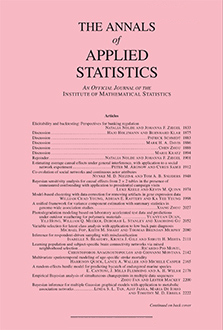Abstract
Isotonic regression is a nonparametric approach for fitting monotonic models to data that has been widely studied from both theoretical and practical perspectives. However, this approach encounters computational and statistical overfitting issues in higher dimensions. To address both concerns, we present an algorithm, which we term Isotonic Recursive Partitioning (IRP), for isotonic regression based on recursively partitioning the covariate space through solution of progressively smaller “best cut” subproblems. This creates a regularized sequence of isotonic models of increasing model complexity that converges to the global isotonic regression solution. The models along the sequence are often more accurate than the unregularized isotonic regression model because of the complexity control they offer. We quantify this complexity control through estimation of degrees of freedom along the path. Success of the regularized models in prediction and IRPs favorable computational properties are demonstrated through a series of simulated and real data experiments. We discuss application of IRP to the problem of searching for gene–gene interactions and epistasis, and demonstrate it on data from genome-wide association studies of three common diseases.
Citation
Ronny Luss. Saharon Rosset. Moni Shahar. "Efficient regularized isotonic regression with application to gene–gene interaction search." Ann. Appl. Stat. 6 (1) 253 - 283, March 2012. https://doi.org/10.1214/11-AOAS504
Information





